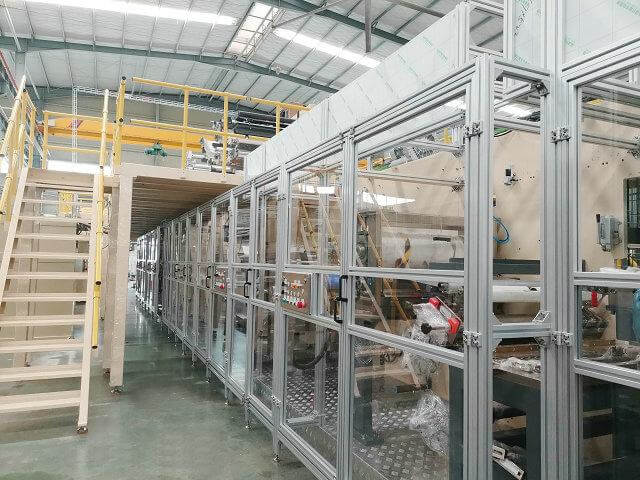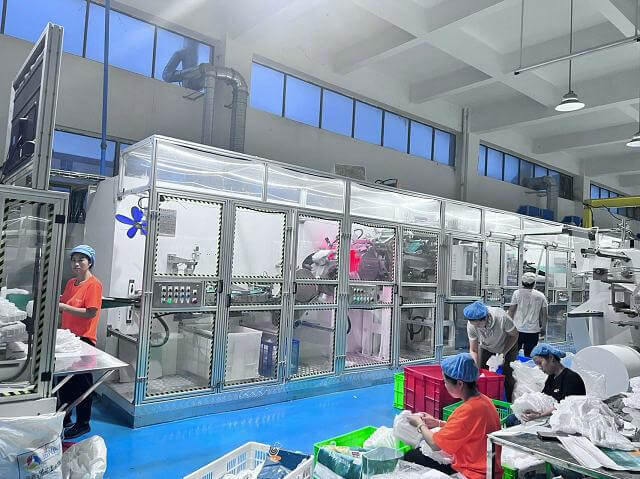Author:Haina Machinery Factory FROM:Diaper Machinery Manufacturer TIME:2023-12-07
Mastering the Operation of a Diaper Production Line

Diapers are an essential part of everyday life for many families around the world. With the increasing demand for diapers, it is crucial to have a well-operated production line to meet the market needs efficiently. Mastering the operation of a diaper production line involves understanding the various stages and processes involved in manufacturing diapers. This article aims to provide an overview of the key aspects of operating a diaper production line.

The first step in mastering the operation of a diaper production line is to familiarize oneself with the equipment and machinery used in the process. These may include machines for material cutting, forming, elastic application, and packaging. Understanding the functions, settings, and maintenance requirements of each machine is crucial to ensure smooth operations and minimize downtime.

Another important aspect is the selection and management of raw materials. Diapers typically consist of various layers, including an absorbent core, top sheet, back sheet, and closures. Each layer requires specific materials such as fluff pulp, non-woven fabrics, adhesives, and elastics. It is vital to establish reliable supplier relationships and conduct quality control checks to ensure the consistent supply of high-quality materials.
Efficient production planning is crucial for maximizing productivity and meeting demand. This involves creating a production schedule, considering factors such as order quantity, lead time, machine capacity, and manpower availability. Implementing an effective production planning system helps optimize resource allocation, minimize bottlenecks, and ensure timely delivery of finished products.
Ensuring the quality of diapers is essential to maintain customer satisfaction. Implementing a robust quality control system involves conducting regular inspections and tests at each production stage. This includes checking material specifications, monitoring machine parameters, and performing sample testing on finished products. Any deviations or defects should be identified and rectified promptly to maintain consistent product quality.
Well-trained operators play a crucial role in the smooth operation of a diaper production line. Providing comprehensive training on machine operation, safety protocols, quality standards, and troubleshooting techniques is essential. Operators should also be educated about good manufacturing practices and hygiene standards to ensure the production of safe and hygienic diapers.
Regular maintenance and prompt repairs are necessary to prevent breakdowns and maximize machine uptime. Establishing a preventive maintenance schedule and conducting routine checks on equipment can help identify potential issues before they escalate. Additionally, having a skilled maintenance team that can quickly address breakdowns and perform repairs is crucial for minimizing downtime and ensuring uninterrupted production.
Achieving optimal efficiency is a continuous process that involves identifying and implementing improvements throughout the production line. This can include streamlining workflow, reducing material waste, optimizing machine settings, and adopting automation where feasible. Regularly analyzing production data and soliciting feedback from operators can help identify areas for improvement and drive ongoing efficiency enhancements.
As the global focus on sustainability increases, considering environmental factors in diaper production is essential. Implementing eco-friendly practices such as using recycled materials, reducing energy consumption, and implementing waste management strategies can help minimize the ecological impact of the production process.
Mastering the operation of a diaper production line requires a comprehensive understanding of equipment, raw materials, production planning, quality control, operator training, maintenance, efficiency optimization, and environmental considerations. By focusing on these key aspects, manufacturers can ensure the smooth and efficient production of high-quality diapers to meet the growing market demand.
